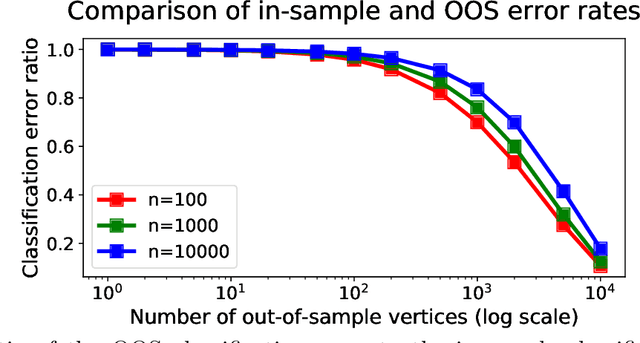Out-of-sample extension of graph adjacency spectral embedding
Paper and Code
Feb 17, 2018


Many popular dimensionality reduction procedures have out-of-sample extensions, which allow a practitioner to apply a learned embedding to observations not seen in the initial training sample. In this work, we consider the problem of obtaining an out-of-sample extension for the adjacency spectral embedding, a procedure for embedding the vertices of a graph into Euclidean space. We present two different approaches to this problem, one based on a least-squares objective and the other based on a maximum-likelihood formulation. We show that if the graph of interest is drawn according to a certain latent position model called a random dot product graph, then both of these out-of-sample extensions estimate the true latent position of the out-of-sample vertex with the same error rate. Further, we prove a central limit theorem for the least-squares-based extension, showing that the estimate is asymptotically normal about the truth in the large-graph limit.
 Add to Chrome
Add to Chrome Add to Firefox
Add to Firefox Add to Edge
Add to Edge